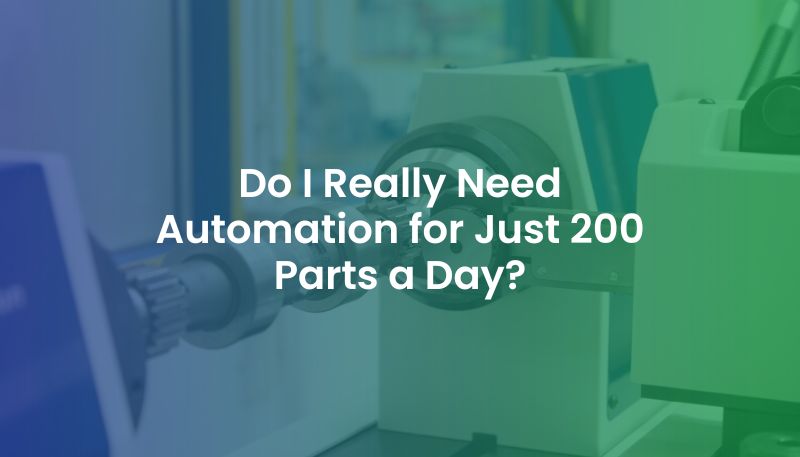It’s a common hesitation especially in small to mid-sized plants.
If you’re producing 100–200 parts per shift, does automation really make sense?
You’re not chasing tact times.
You’re not running a 24/7 line.
But you are working with precision parts and that makes all the difference.
Low Volume Doesn’t Mean Low Complexity
Parts with tight tolerances require more than just careful machining.
They require consistent inspection that doesn’t fluctuate across shifts, operators, or conditions.
In most low-volume setups, inspection is still manual:
- Dial gauges, height gauges, plug gauges — fast but subjective
- Offline CMMs — accurate, but slow and disconnected from the line
- Operator notes on paper — no data traceability or visibility into trends
This approach might seem cost-effective at low volumes.
But the true cost shows up when:
- A deviation goes unnoticed until assembly
- Rework hits a batch of high-value components
- You lose confidence in your own inspection data during a customer audit
Where Automation Still Adds Value
Even at 200 parts/day, automation solves specific and recurring challenges:
1. Operator Dependency
When a skilled inspector is on leave, do your results shift?
Automation removes subjectivity results are consistent, every time.
2. Part-to-Part Repeatability
Manual inspection often checks dimensions selectively.
Automated systems record every tolerance, every time, giving complete traceability.
3. Tool Wear & Drift Detection
If a cutting tool starts drifting slightly, how long before someone notices?
Inline or near-line systems flag it after 2–3 parts not after 40.
4. Inspection Time & Flow
Even with fewer parts, waiting for offline inspection slows down decisions.
Automation gives results in seconds without moving the part to another room.
Built for the Shopfloor. Sized for Your Need.
At CalibroMeasure, we’ve developed inspection systems that fit precision processes not production volumes.
FlexGauge, MeasureMate, and other platforms offer:
- Absolute measurement (no need for a master part)
- Real-time feedback to operators or machines
- Micron-level accuracy, even in thermal and vibration-heavy environments
- Compact footprints designed to sit near your line, not in a separate lab
- Support for complex tolerances: runout, roundness, true position, diameter, etc.
You don’t need 2,000 parts/day to benefit.
You need parts that pass the first time, every time.
Rethinking the Equation
Automation isn’t about quantity.
It’s about confidence in your process.
If you’re working with parts where a small deviation can mean fit failure, vibration, or customer rejection automation protects more than time.
It protects trust, stability, and decision-making clarity.


